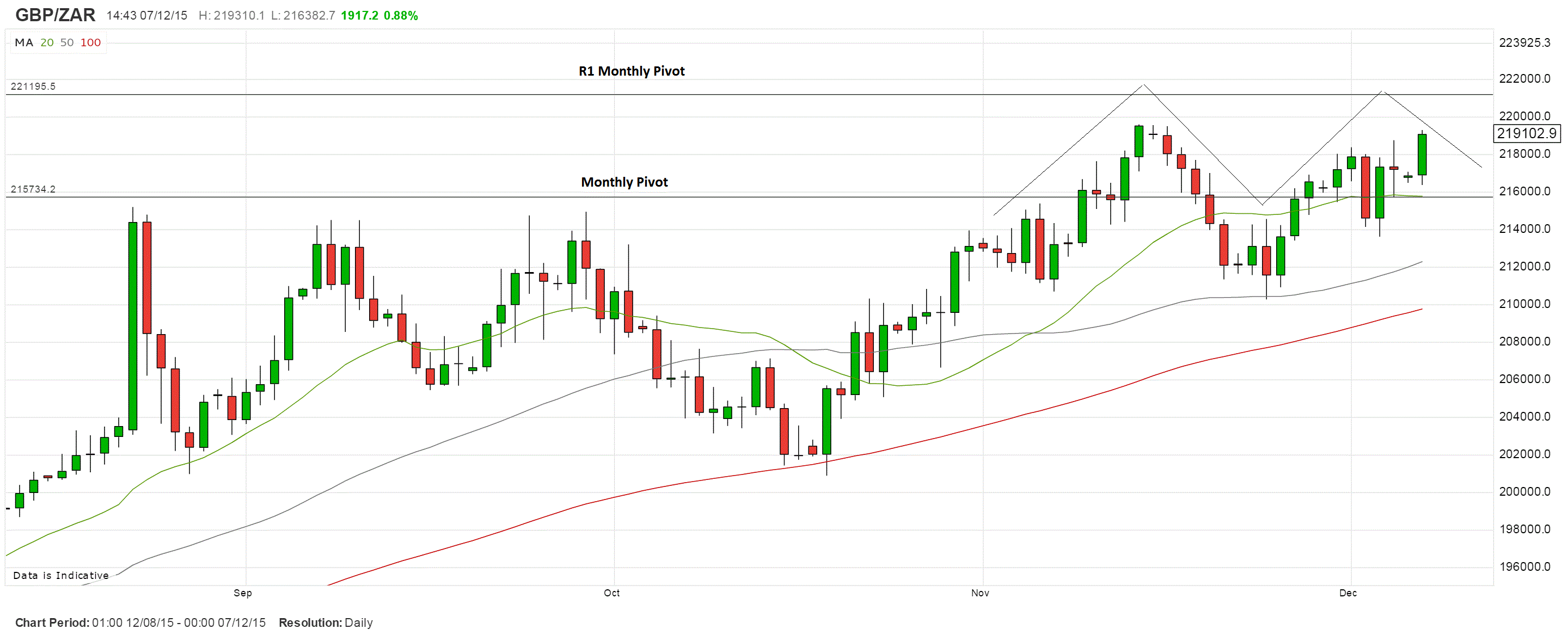South African Rand on Cusp of Record Lows After Rating Agency Assessments
The pound sterling is looking to break into the 22.00 level against the ZAR on the back of soft global commodity prices and a deterioration in domestic fundamentals.

A lowering of the credit-worthiness of South African government bonds on Friday evening, increased fears the country’s sovereign debt could lose the touch-stone of investment grade, resulting in a strong sell-off in SA fixed income and further weakness in the rand.
Whilst Fitch’s complete down-grade of South African debt to BBB - a notch above investment grade - had been on the cards for ages, the S&P decision to lower its assessment from stable to negative, came as an even bigger shock; S&P’s rating of South African debt already stood at BBB.
The ratings agency cited the country’s slow negative growth, sustained and widening current account deficit and contingent liabilities from state-owned companies, as major reasons, adding:
“The country faces domestic constraints including inadequate electricity supply, and overall weak business confidence inhibiting substantial private sector investment.”
In note on Monday morning, Royal Merchant Bank (RMB) saw a heightened risk the country could be eventually down-graded to junk status - a grade at which international bond portfolio managers refuse to own debt - in 2016:
“S&P’s decision to put South Africa on negative outlook was a huge shock. Based on how quickly they have down-graded other countries in the past, there is a real possibility that we will face a full down-grade next year, losing our investment grade status.”
However, analysts have often noted how popular SA bonds are amongst offshore foreign investors seeking a higher yield compared to the low yield offered in developed markets. With yields at over 8.0% on SA government bonds they offer substantial returns despite the heightening risks.
Fear of dwindling carry trade
The higher-than-expected U.S Non-Farm Payrolls result on Friday heightened expectations that the Fed will increase interest rates at its December meeting and this further hit the Rand as it reduced demand for carry traders hoping to profit from the difference between U.S and South African interest rates.
However, there is also speculation the South African Reserve Bank (SARB) will hike interest rates to 6.50% at its next rate meeting on the 29th of January in order to prop up demand for the rand, as it once again widens the interest rate differential and reinvigorates demand for the carry trade.
The Futures market is currently discounting a 70% probability the SARB will hike its repo rate by another 0.25% at its next meeting and then a further 0.75% during 2016. The chance of action from the central bank will have risen post-NFP and even more it the Fed does make a move in December.
According to ABSA bank, the interest rate outlook for SA can be summarised as follows: “If SARB has to hike policy rates more aggressively and/or Fed tightening proves to be less than is currently expected, then the ZAR could benefit from a wider interest rate spread.”
GBP/ZAR sees possible surprise consolidation ahead
From a technical perspective, the pair has reasserted it’s longer-term up-trend in recent days, in line with the fundamental forecast for future ZAR weakness.
There is a strong possibility of a move up to touch the previous highs at 21.96, however, following that risks become more balanced, and although the dominant up-trend is favoured to continue, there is a sign a double top reversal pattern could also be in the process of forming, and if the exchange rate is rejected by resistance from the 21.96 highs and starts to fall that will muddy the outlook and take the edge of the bullish overall picture.
The R1 Monthly Pivot at 22.12 also provides a tough resistance level where the rate would be expected to rebound or consolidate.





